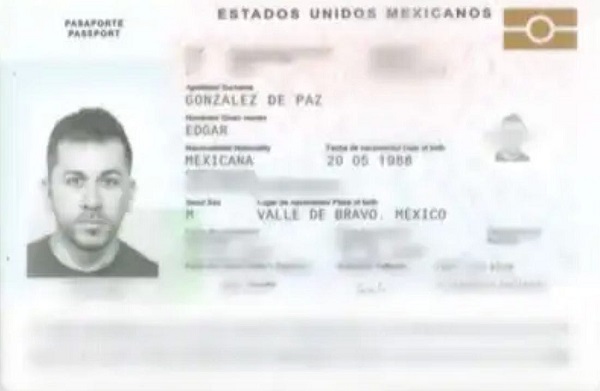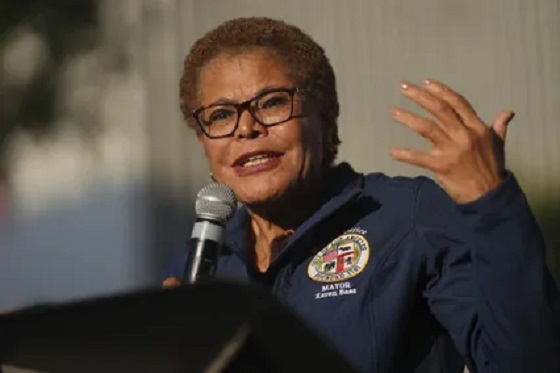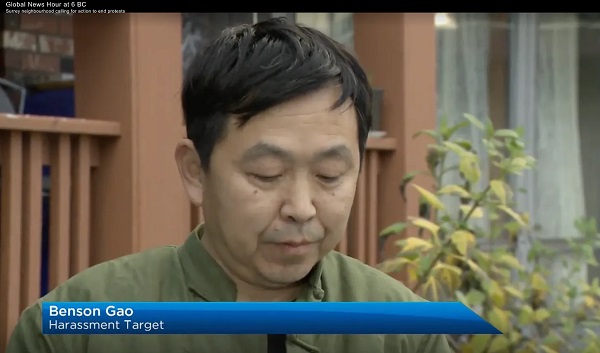illegal immigration
UN Budgets Millions for U.S.-Bound Migrants in 2024

As this mural in Tapachula, Mexico, shows, UN agencies are well aware that their cash aid and assistance helps support illegal immigration over the U.S. southern border. January 2022 photo by Todd Bensman.
From the Center for Immigration Studies
By Todd Bensman
Public docs show cash handouts to help feed, transport, and house people headed for the U.S. border
Early on in America’s historic border crisis, now entering its fourth record-smashing year, some Republican lawmakers named a significant enabling culprit other than the usual Mexican cartel smugglers. They named the U.S. taxpayer-funded United Nations as essentially a co-smuggler after seeing my reports that the UN was handing out debit cards and cash vouchers to aspiring illegal border crossers on their way north.
One outraged group of 21 border-security-minded lawmakers even pitched a bill that would require the United States, the UN’s largest donor, to turn off the taxpayer money spigot. H.R. 6155 never caught fire, though, in no small part because “fact checks” claiming to debunk other reports like mine in the conservative press dissuaded broader media interest and left the American public in the dark.
But now the UN’s 2024 update to the “Regional Refugee and Migrant Response Plan” (RMRP for short), a planning and budget document for handing out nearly $1.6 billion in 17 Latin America countries, can cast a broad confirming light on the cash giveaways and much more aid for 2024 ahead — with the helping hands of 248 named non-governmental organizations. Despite the RMRP plan title naming Venezuelans as recipients of this aid operation, the document’s fine print (footnote on p. 14 and paragraph on p. 43, for instance) says the largesse goes to “all nationalities” and “multiple other nationalities”.

A Haitian shows his UN cash card outside a UN facility in Tapachula. He was there to complain the agency had not deposited money in the depleted card. January 2022 photo by Todd Bensman.
The documents clear up any mystery about what the UN and NGOs are doing on the migrant trails and leave no room for supposedly debunking “fact checks”.
In a nutshell, the UN and its advocacy partners are planning to spread $372 million in “Cash and Voucher Assistance (CVA)”, and “Multipurpose Cash Assistance (MCA)” to some 624,000 immigrants in-transit to the United States during 2024. That money is most often handed out, other UN documents show, as pre-paid, rechargeable debit cards, but also hard “cash in envelopes”, bank transfers, and mobile transfers the U.S. border-bound travelers can use for whatever they want.
The $372 million in planned cash giveaways to the 624,000 immigrants moving north and illegally crossing national borders “represents a significantly greater share of the financial requirements” for 2024, the RMRP says, but it is still only one part of much broader UN hemisphere-wide vision that aims to spend $1.59 billion assisting about three million people in 17 countries who emigrated from their home nations. Most will be “in-destination” recipients already supposedly settled in third countries, albeit in declining numbers, but a rising share of cash will go to the spiking numbers of “in-transit” immigrants launching journeys from those accommodating countries north to the United States.

Cash cards going out to immigrants in long lines at a camp in Reynosa, Mexico, in September 2021, photos that first drew ostensibly debunking fact checks. Photos by Todd Bensman.
Without distinction, both populations get access to UN cash but also “humanitarian transportation”, shelter, food, legal advice, personal hygiene products, health care, and “protection” against threats like human smuggling, and much more besides cash in envelopes or debit cards.
The cash handouts will be in the mix during 2024 as the UN and its private partners incorporate an “increased use of CVA” in, for instance, the $184 million it plans to provide 1.2 million people, $122 million for rent support and also “temporary collective shelter” for 473,000 people, and $25.8 million for “humanitarian transportation” to 129,000 people crossing borders. There’ll also be “expanded use of multi-purpose cash” for those claiming “gender-based violence”.
The UN’s 2024 Game Plan
The 130-page UN-spearheaded RMRP 2024 update went public in December and is readily accessible online, as is the original 2023-2024 plan it revises — sharply upward. It is the latest since the United Nations High Commissioner for Refugees and the UN’s International Organization for Migration started the program in 2018, originally for Venezuelans but now open to anyone in 17 nations of Latin America and the Caribbean. (For the complete list of involved groups, see p. 268, here, and explore their activities further with this handy interactive tool).
Some 57 international organizations would manage the handouts of $273 million, while 132 “national NGOs” and “civil service organizations” would handle $70 million in aid. Fifteen UN agencies would get the lion’s share at $1.2 billion.
The NGOs actively participated in crafting the RMRP 2024 Update, which amends a 2023-2024 plan released back in 2022 that at the time foresaw a decline in illegal immigration after 2023. It increased, instead.

A Nicaraguan on his way to the U.S. showed his UN cash card in Monterrey, Mexico. January 2022 photo by Todd Bensman.
“Country-level projections of in-transit movements for populations moving north through Central America and Mexico have been revised sharply upwards,” p. 44 explains in updating the 2024 RMRP update.
The reasons given include factors like “xenophobia” leading resettled migrants to leave for the United States. It does, finally, tag the real culprit: U.S. policies that created “newly established opportunities for regular pathways to move to the United States of America” for those who could make their way to northern Mexico.
The document makes clear in writing that the UN and these partners know their endeavor aids, abets, and makes possible the “onward movement” of immigrants who intend to illegally cross borders, especially to get into the United States.
None of them care. Twenty new groups joined the UN endeavor for 2024 for a total of 248.

Their plan frequently acknowledges the illegality, saying for instance, that one in three of the Venezuelan migrants the UN aims to help are in “irregular situations”, including those “who have crossed international borders without complying with all the legal and administrative requirements for entry and may not have the required documentation to do so”, as well as visa overstayers. The original 2023-2024 plan even spelled out that “special attention will be given to the use of [cash and voucher assistance] for in-transit populations, including the need for comprehensive solutions throughout the journey”.
The only expression of apparent concern about supporting people clearly intending to break U.S. law shows up on a page depicting a map with the thin red line of a migration route leading to the U.S. border at about El Paso. Someone took the trouble to add a footnote on that page noting that the map “does not imply official endorsement or acceptance by the UN”.

UN workers help long lines of immigrants apply for aid in Tapachula, Mexico. Photos by Todd Bensman.
Why hand out hundreds of millions of dollars as cash and services to hundreds of thousands planning to illegally follow that red line through UN member states, to include crossing the US border, when those nations don’t like or want it and must bear the political controversies of it?
“To support access to asylum procedures, migratory regularization activities, and socio-economic integration”, the plan says.
The money handout program “has taken on increasing importance”, it explains elsewhere, because it gives growing numbers of immigrants “the flexibility to cover their expenses and needs they deem most urgent, increasing their dignity and autonomy”.
Where It’ll Be Doled Out
Over the past three years, I have visited UN waystations featuring long lines of U.S.-bound immigrants applying for aid from clipboard-wielding workers handing out cash cards and other goodies, from Reynosa and Monterrey in the north of Mexico to Tapachula in the far south. But the waystations also appear everywhere along the trails much farther south.
The RMRP plan calls for distributing most of the cash, cash equivalents, and vouchers to migrants in Colombia and Ecuador, which are launch pads that sent 450,000 people through the Darian Gap jungle passage in Panama. The plan calls for 24 NGO partners to give money to 95,000 in Colombia and 59,000 in Mexico.
Some of the so-called transportation assistance is for local cab rides to stores or doctor appointments. But the UN agencies also know that aid will facilitate “increased onward movements” between countries of the “in-transit population” for 105,000 immigrants in Colombia, 25,000 in Brazil, 13,000 in Panama, and 3,700 in Mexico, to name a few places.
Likewise for “shelter”, $27.5 million is earmarked for 161,000 travelers in Colombia, $22.5 million for 179,000 in Ecuador, $18 million for 165,000 in Peru, and $4.3 million to help 33,000 in Mexico.
Political Fight or Flight
In years one and two of the historic mass migration crisis that President Biden’s let-them-all-in policies triggered, Republicans in the U.S. House of Representatives spoiled for a political fight over UN and NGO activity along the migrant routes because it was funded largely and ironically by the United States. And not just them. In December 2022, Texas Gov. Greg Abbott wrote Attorney General Ken Paxton asking him to investigate whether non-governmental organizations unlawfully assisted mass border crossings that overwhelmed the El Paso region.
Recent Congressional Research Service reporting reminds us that they had some legitimate grounds to complain; the United States has been the largest financial contributor to UN entities since the UN was established in 1945. Congress and the executive branch play key roles; Congress appropriates U.S. funding, while the executive branch shapes where the money will go through the State Department and the U.S. Mission to the United Nations in New York City.
Complaints, questions, and proposed legislation about the UN’s role in all of this may have gone cold, but as the latest RMRP plan reveals, the world body is as hot on the trail as ever.
Prior to his government experience, Bensman worked on staff for The Dallas Morning News, CBS, and Hearst Newspapers, covering the FBI, federal law enforcement and serving on investigative teams. He reported extensively on national security issues after 9/11 and worked from more than 25 countries in Latin America, the Middle East, and Africa. In Texas, he authored long-form investigative stories with emphases on border security related to illegal immigration and Mexico’s drug war. His reporting on human smuggling from Muslim-majority countries, Mexico’s drug war, and cross-border gun smuggling to cartels earned two National Press Club awards and an Inter-American Press Association award, among others.
Crime
CBSA Bust Uncovers Mexican Cartel Network in Montreal High-Rise, Moving Hundreds Across Canada-U.S. Border

A court document cited by La Presse in prior reporting on the case.
The conviction targets Edgar Gonzalez de Paz, 37, a Mexican national identified in court evidence as a key organizer in a Montreal-based smuggling network that La Presse documented in March through numerous legal filings.
According to the Canada Border Services Agency, Gonzalez de Paz’s guilty plea acknowledges that he arranged a clandestine crossing for seven migrants on January 27–28, 2024, in exchange for money. He had earlier been arrested and charged with avoiding examination and returning to Canada without authorization.
Breaking the story in March, La Presse reported: “A Mexican criminal organization has established itself in Montreal, where it is making a fortune by illegally smuggling hundreds of migrants across the Canada-U.S. border. Thanks to the seizure of two accounting ledgers, Canadian authorities have gained unprecedented access to the group’s secrets, which they hope to dismantle in the coming months.”
La Presse said the Mexico-based organization ran crossings in both directions — Quebec to the United States and vice versa — through roughly ten collaborators, some family-linked, charging $5,000 to $6,000 per trip and generating at least $1 million in seven months.
The notebooks seized by CBSA listed clients, guarantors, recruiters in Mexico, and accomplices on the U.S. side. In one April 20, 2024 interception near the border, police stopped a vehicle registered to Gonzalez de Paz and, according to evidence cited by La Presse, identified him as one of the “main organizers,” operating without legal status from a René-Lévesque Boulevard condo that served as headquarters.
Seizures included cellphones, a black notebook, and cocaine. A roommate’s second notebook helped authorities tally about 200 migrants and more than $1 million in receipts.
“This type of criminal organization is ruthless and often threatens customers if they do not pay, or places them in a vulnerable situation,” a CBSA report filed as evidence stated, according to La Presse.
The Montreal-based organization first appeared on the radar in a rural community of about 400 inhabitants in the southern Montérégie region bordering New York State, La Presse reported, citing court documents.
On the U.S. side of the line, in the Swanton Sector (Vermont and adjoining northern New York and New Hampshire), authorities reported an exceptional surge in 2022–2023 — driven largely by Mexican nationals rerouting via Canada — foreshadowing the Mexican-cartel smuggling described in the CBSA case.
Gonzalez de Paz had entered Canada illegally in 2023, according to La Presse. When officers arrested him, CBSA agents seized 30 grams of cocaine, two cellphones, and a black notebook filled with handwritten notes. In his apartment, they found clothing by Balenciaga, a luxury brand whose T-shirts retail for roughly $1,000 each.
Investigators have linked this case to another incident at the same address involving a man named Mario Alberto Perez Gutierrez, a resident of the same condo as early as 2023.
Perez Gutierrez was accompanied by several men known to Canadian authorities for cocaine trafficking, receiving stolen goods, armed robbery, or loitering in the woods near the American border, according to a Montreal Police Service (SPVM) report filed as evidence.
The CBSA argued before the immigration tribunal that Gonzalez de Paz belonged to a group active in human and drug trafficking — “activities usually orchestrated by Mexican cartels.”
As The Bureau has previously reported, Justin Trudeau’s Liberal Cabinet was warned in 2016 that lifting visa requirements for Mexican visitors would “facilitate travel to Canada by Mexicans with criminal records,” potentially including “drug smugglers, human smugglers, recruiters, money launderers and foot soldiers.”
CBSA “serious-crime” flags tied to Mexican nationals rose sharply after the December 2016 visa change. Former CBSA officer Luc Sabourin, in a sworn affidavit cited by The Bureau, alleged that hundreds of cartel-linked operatives entered Canada following the visa lift.
The closure of Roxham Road in 2023 altered migrant flows and increased reliance on organized smugglers — a shift reflected in the ledger-mapped Montreal network and a spike in U.S. northern-border encounters.
The Bureau is a reader-supported publication.
To receive new posts and support my work, consider becoming a free or paid subscriber.
illegal immigration
Los Angeles declares a state of emergency over ICE deportations

Los Angeles County leaders have declared a state of emergency over Immigration and Customs Enforcement operations, a move that federal officials and conservative leaders are blasting as a political stunt that undermines the rule of law.
JUST IN: Los Angeles County declares a state of emergency in response to the ICE raids, will provide rent relief.
The LA County Board of Supervisors made the move as the Trump admin continues to ramp up the raids.
“The move allows the LA County Board of Supervisors to provide… pic.twitter.com/DqtvvfhWDu
— Collin Rugg (@CollinRugg) October 15, 2025
On Tuesday, the Los Angeles County Board of Supervisors approved a “Proclamation of Local Emergency for Federal Immigration Actions,” with only one supervisor, Kathryn Barger, voting no. The board claimed that ICE raids “created fear, disrupted neighborhoods, and destabilized families, workers, and businesses” across the region.
Supervisor Lindsey Horvath, who introduced the measure, said the declaration “ensures that the full weight of County government is aligned to support our immigrant communities who are being targeted by federal actions.” But critics say the move has nothing to do with public safety and everything to do with shielding criminal illegal aliens from deportation. “The only emergency is the one the residents of Los Angeles face after electing officials who give a middle finger to the law,” an ICE spokesperson told Fox News, adding that the agency is simply enforcing President Trump’s mandate to remove those in the country illegally — including violent offenders.
ICE spokesperson Emily Covington went further, saying, “Perhaps the board should ‘supervise’ funds to support law-abiding fire victims who still haven’t recovered instead of criminal illegal aliens seeking refuge in their sanctuary city. While they publicly fear-monger, I would be shocked if they didn’t agree with ICE removing a child rapist from their neighborhood.”
Attorney General Pam Bondi called the move “illegal” and accused Los Angeles County of aiding and abetting lawbreaking. “They don’t care about their citizens,” Bondi said on Fox News’ Hannity. “It’s hurting our citizens, and we’re going to keep fighting for the American people.” Chair Kathryn Barger — the lone dissenting vote — also warned that the county’s action could trigger federal consequences, noting that “the federal government has sole authority to enforce federal immigration law, and local governments cannot impede that authority.” She added that the county should instead push for “meaningful immigration reform that is fair, pragmatic, and creates legal pathways for those who contribute to our communities.”
The board’s declaration allows county departments to “mobilize resources, expedite contracting and procurement, coordinate interagency response, and request state and federal assistance” for residents impacted by ICE operations. It will remain in effect until the supervisors vote to terminate it. Homeland Security Secretary Kristi Noem announced in August that between June and August, ICE agents arrested more than 5,000 illegal immigrants across Los Angeles County — including gang members, child predators, and murderers. “Families protected. American taxpayers spared the cost of their crimes AND the burden of their benefits,” Noem said at the time. “Thank you to our brave law enforcement officers. Make no mistake: if you are here illegally, we will find you, arrest you, and send you back. This is just the beginning.”
Critics of the county’s new proclamation say it sends the opposite message — one that rewards lawlessness and punishes those enforcing the law. As ICE continues its work to deport violent offenders, Los Angeles’ leadership appears more focused on fighting federal immigration law than on protecting the residents they were elected to serve.
(AP Photo/Eric Thayer)
-

 Daily Caller11 hours ago
Daily Caller11 hours agoUS Nuclear Bomber Fleet Shares Fence With Trailer Park Linked To Chinese Intel-Tied Fraudster
-

 espionage10 hours ago
espionage10 hours agoChinese-Owned Trailer Park Beside U.S. Stealth Bomber Base Linked to Alleged Vancouver Repression Case
-

 Alberta2 days ago
Alberta2 days agoSchool defunding petition in Alberta is a warning to parents
-

 International2 days ago
International2 days agoBBC boss quits amid scandal over edited Trump footage
-

 Daily Caller9 hours ago
Daily Caller9 hours agoLaura Ingraham Presses Trump On Allowing Flood Of Chinese Students Into US
-

 Agriculture2 days ago
Agriculture2 days agoBovaer Backlash Update: Danish Farmers Get Green Light to Opt Out as UK Arla Trial Abruptly Ends!
-

 Daily Caller2 days ago
Daily Caller2 days agoMcKinsey outlook for 2025 sharply adjusts prior projections, predicting fossil fuels will dominate well after 2050
-

 Crime7 hours ago
Crime7 hours agoCBSA Bust Uncovers Mexican Cartel Network in Montreal High-Rise, Moving Hundreds Across Canada-U.S. Border



